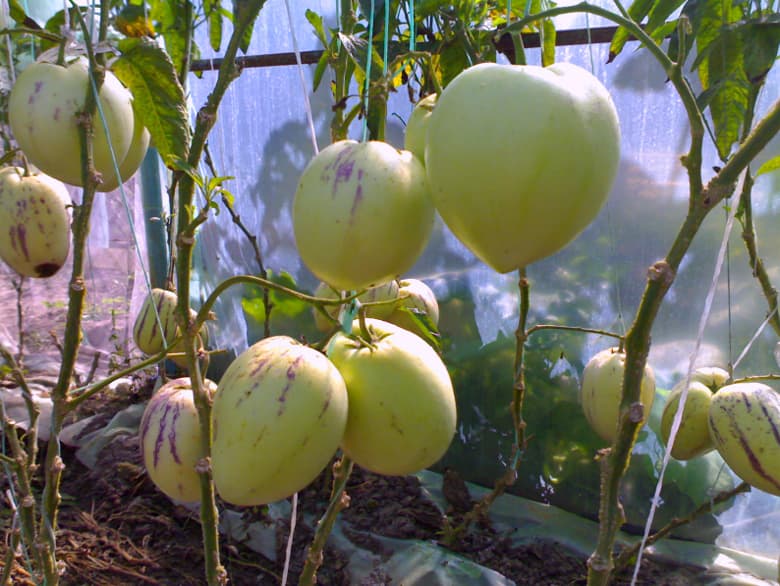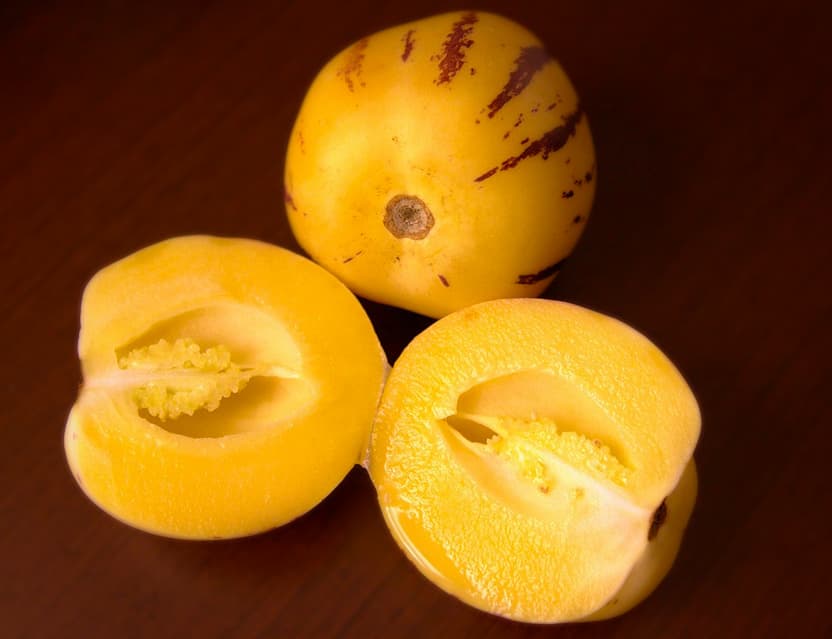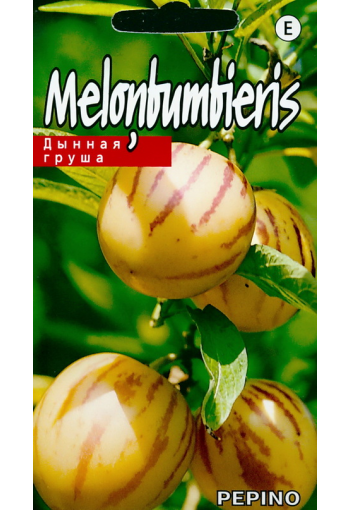Ex Tax: 3.15€
Is a high-productive vegetable culture for extended growing cycle of winter greenhouses. Plants remind tomato by its biology, leaves are pepper-like, potato-like inflorescence. Plant suits for soil and non-soil cultures. 70-80 days - from shoots to flowering, 75-90 days - from ovaries formation to ripening. Yield reaches up to 28 kg/m2 if the right technologies are used. The average weight of fruit is 300-400 g in summer months and 200 g in autumn months. Yellow fruits have violet long stripes and points. Fruit is like sweet pepper by its inner structure, but with very thick pericarp up to 5 cm. Flesh is from light to bright yellow, very juicy and melting, moderately sweet. Dry matter is 8-10%. Flesh is rich in carotene (1-2 mg%), ferrum, B group vitamins, etc. The taste and aroma remind melon. Fruits are recommended for desserts fresh ore after thermal treatment. Very tender flesh doesnt bear mechanic damages, thats why one-piece packing is needed. Undamaged fruits can be kept at the temperature of 5 C from 1 to 2,5 months if collected at the beginning of yellowing, mature fruits - from 2 weeks to 1,5 months. First fruits start to ripe in May - beginning of June, if planted early. A necessity of growing sprouts in Petri cup is an important characteristic. Konsuelo is a very tall variety (up to 2,2 m. in extended cycle). Productivity is up to 8 kg per plant considering planting density of 3 plants/m2. Plant has bright green slightly-hairy leaf blades. Inflorescence is big, has up to 20 flowers. The average weight of fruit is 320 g, heart shape is predominant. Yellow skin has distinct violet longitudinal stripes. No visible netting on skin. Color of flesh is light yellow. Undamaged fruits can be kept up to 75 days at the temperature of 4-5 C.

Exotic Solanaceous culture - Pepino.
A perennial, rare vegetable crop for greenhouses, apartments and winter gardens. Stems are green, with purple spots, rather thin, flexible, up to 2 m long. Leaves are simple, lanceolate, light green, with strong pubescence. The fruit is ovoid, pale cream or lemon-yellow in color, with lilac stripes, weighing up to 1300 g.
The pulp is juicy, sweet and sour, honey-yellow in color with the taste of exotic fruits and melon aroma. Contains retinol (vitamin A) and ascorbic acid (vitamin C), which is no less than citrus fruits. The fruits are used fresh or for making jam. Seeds are germinated at a temperature of +28+30°C on a damp surface in a transparent container with a lid, preferably with additional lighting.
The optimal sowing time is late November - early December, planting in greenhouses - as early as possible, subject to frost protection (optimally - from late February to early May, since from mid-May to mid-August the fruits are almost not set due to long daylight hours ). Plants form in 1-2 stems, the cultivation technique of seedlings is close to eggplant, and after planting in a permanent place - to tomato. At the end of summer, pepino is transplanted into a pot and transferred to a warm, bright place.

Exotic solanaceous culture - Pepino.











